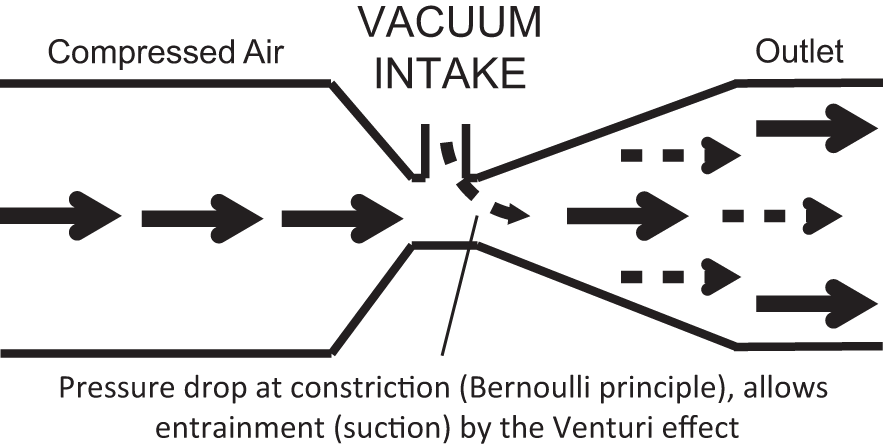Venturi systems utilise the Bernoulli principle to create a negative pressure. They are driven by compressed gas, but are limited by weak flow rates and loud noise.
Applied science
What factors affect the flow rate of a suction system?
The flow rate of suction equipment refers to the amount of fluid moved through the unit per unit time. This is influenced by the pressure gradient between the regulator and suction catheter, the resistance of the equipment and the viscosity of the fluid.
Vacuum regulators vary the maximum amount of negative pressure supplied from the vacuum source to the patient end of the suction apparatus (collection canister and suction tubing). They often comprise an adjustable spring/diaphragm to set and maintain a constant vacuum level. Adjusting the regulator to increase the pressure gradient from the vacuum source to the patient end will increase the flow rate through the system.
The total resistance of the system defines the maximum achievable flow rate. The regulator, collection canister, tubing and connectors contribute to the resistance in the system. The most notable factor increasing resistance and thus reducing flow rate is the suction tubing attached to the collection canister. Ideally, this tubing should be short and have the largest internal diameter possible. When flow is laminar, Hagen Poiseuille’s law will apply. Therefore, increasing the internal diameter of the tubing will have a much greater influence on flow than shorter tubing. This is because doubling the internal diameter of suction tubing/catheters will increase flow rate by 24, whereas halving the length will only double the flow.
The viscosity of fluids suctioned affects flow rate. Highly viscous and cohesive fluids such as thick mucus decrease flow because they move less readily through the tubing. Particulate matter such as food particles from vomitus can block suction tubing, causing a significant decrease in flow rate.
Stay updated, free articles. Join our Telegram channel

Full access? Get Clinical Tree






